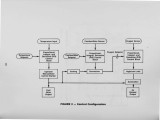| Title |
Technologies for Low Cost Combustion Control |
| Creator |
Burk, Norm ; Woolbert, Gordon |
| Publisher |
University of Utah |
| Date |
1986 |
| Spatial Coverage |
presented at Chicago, Illinois |
| Abstract |
In the past ten years there have been significant advances in technologies that are relevant to improving gas-fired combustion controls for industrial applications. These technologies include sensors, electronics, and packaging. Sensors that can measure the constituents in the products of combustion (e.g., CO and 02) can be made less expensive, more reliable, and require less effort in calibration and maintenance. The use of digital technology in the electronics area has substantially reduced the electronics cost while increasing its functional capability and reliability. Lower-cost fabrication and packaging techniques are available now because of the use of new materials and manufacturing processes. Combining these technologies can result in a combustion controller that is significantly lower in cost than existing devices and therefore applicable to a much wider range of applications. In this paper, the characteristics of such a controller are described and the benefits that will accrue to the natural gas industry are summarized. |
| Type |
Text |
| Format |
application/pdf |
| Language |
eng |
| Rights |
This material may be protected by copyright. Permission required for use in any form. For further information please contact the American Flame Research Committee. |
| Conversion Specifications |
Original scanned with Canon EOS-1Ds Mark II, 16.7 megapixel digital camera and saved as 400 ppi uncompressed TIFF, 16 bit depth. |
| Scanning Technician |
Cliodhna Davis |
| ARK |
ark:/87278/s6jw8hfh |
| Setname |
uu_afrc |
| ID |
3659 |
| Reference URL |
https://collections.lib.utah.edu/ark:/87278/s6jw8hfh |











